Continuum
Models Discrete
Systems -13
CMDS Investigators Workshop:
At the Frontiers
of Computation and Materials
Snowbird, Utah,
USA, May 16, 2015
The
Workshop is sponsored by NSF
|
|
The
purpose of CMDS13
Investigators Workshop: "At the Frontiers of Computation
and Materials" is to bring together local researchers
working in mathematics for complex materials, to give the
floor to young researchers in the area, and to discuss
current trends of the field. The informal and friendly
atmosphere made this meeting fruitful for exchange of ideas,
methods and results.

Program:
9:00 - 9:50 – Kirill
Cherednichenko. Homogenisation of the system of
high-contrast Maxwell equations
(guest lecture)
9:50 - 10:10 – Coffee break
10:10 - 10:40 - Patrick Bardsley. Imaging
with correlated sourse pairs.
10:40 - 11:10 - Kyle Steffen. Models
of porous media flow and their numerical solution.
11:10 - 11:40 - Ornella Mattei. Bounds on the
transient response of two-component viscoelastic composites
11:40 - 12:10 - Michal Kordy. Hexahedral
edge element approximation of the electromagnetic field.
Distortion of the elements
12:10 - 12:50 – Discussion: "New trends in Math
Methods for materials" (Graeme Milton, Elena Cherkaev,
Kenneth Golden, Kirill Cherednichenko, Andrej Cherkaev).
1:00 - 2:30 - Lunch
Paricipants
Patrick Bardsley
Maxence Cassier
Kirill Cherednichenko
Andrej Cherkaev
Elena Cherkaev
Yekaterina Epshteyn
Kenneth Golden
Fernando Guevara-Vasquez
Davit Harutyunyan
Michal Kordy
Ornella Mattei
Graeme Milton
Braxton Osting
Kyle Steffen
Andrejs Treibergs
Qing Xia
Photos
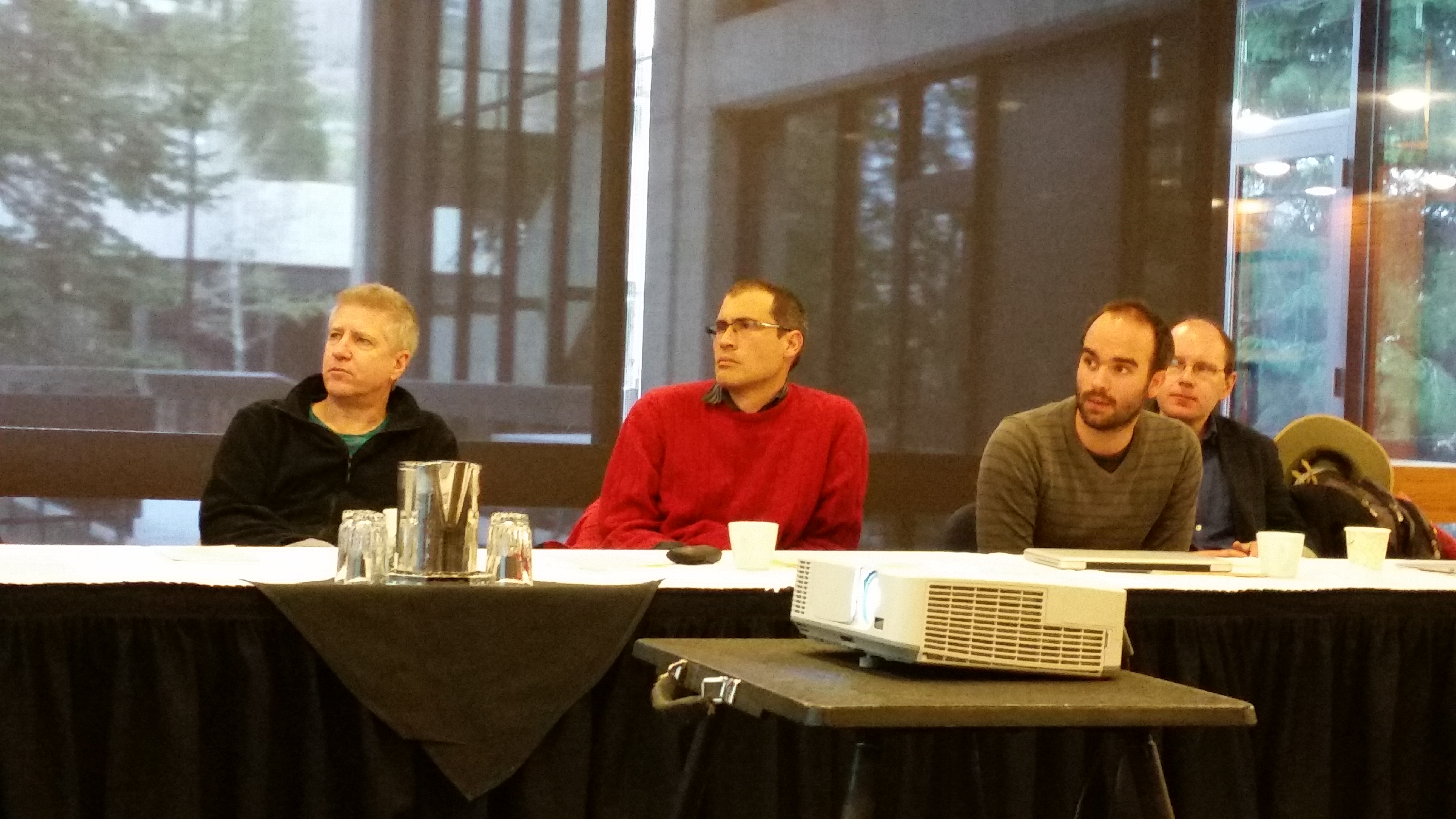
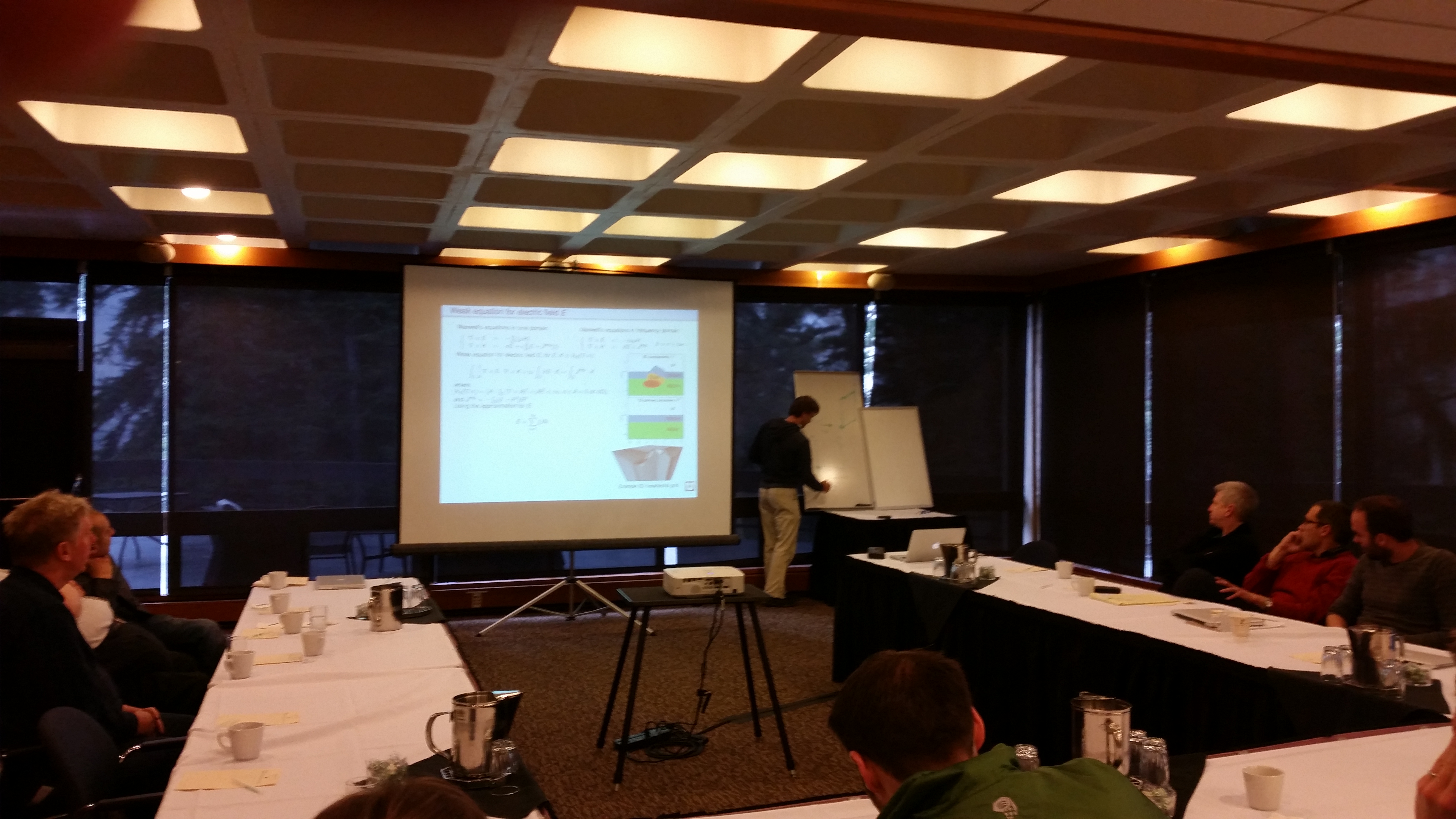
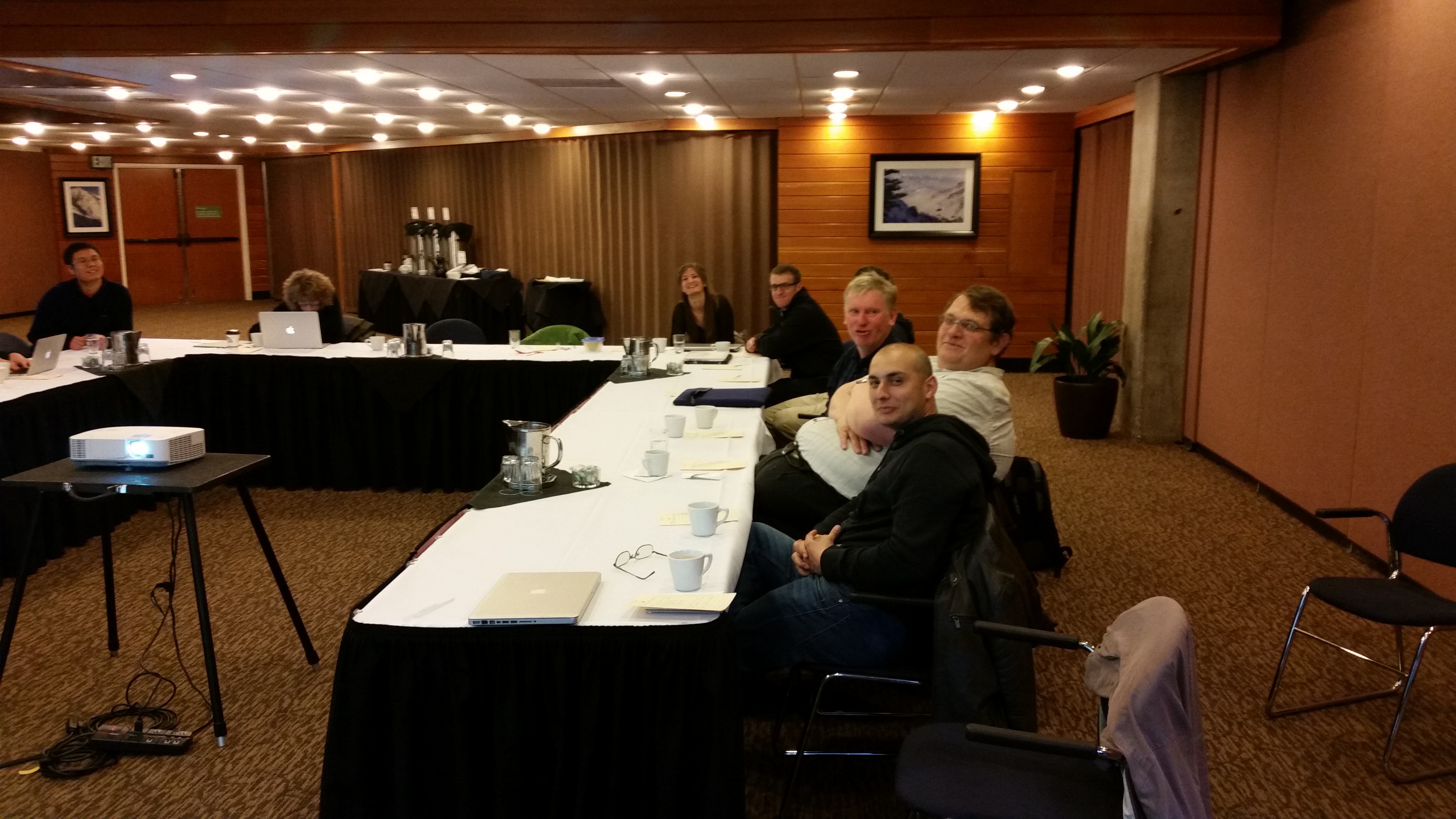
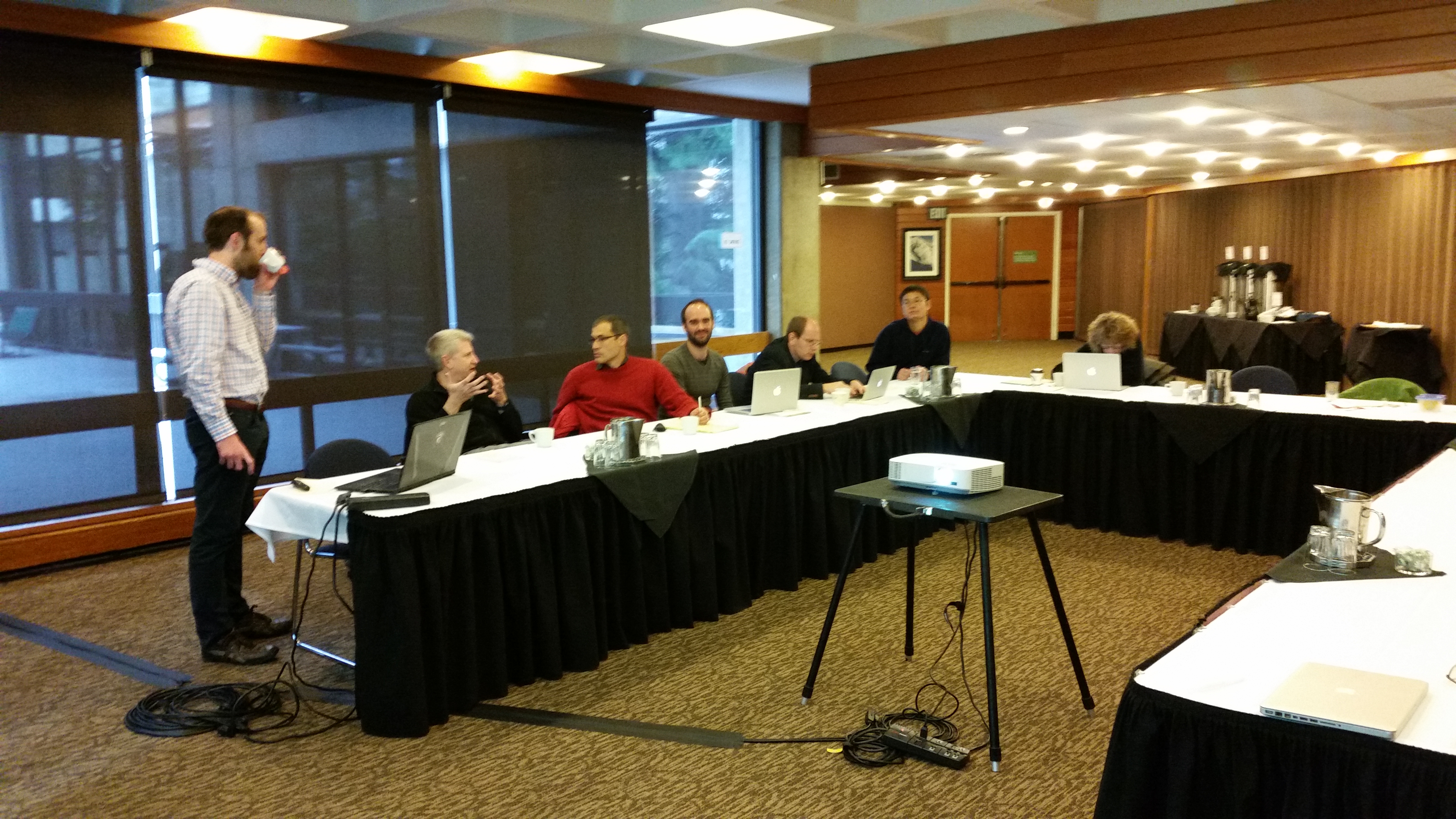
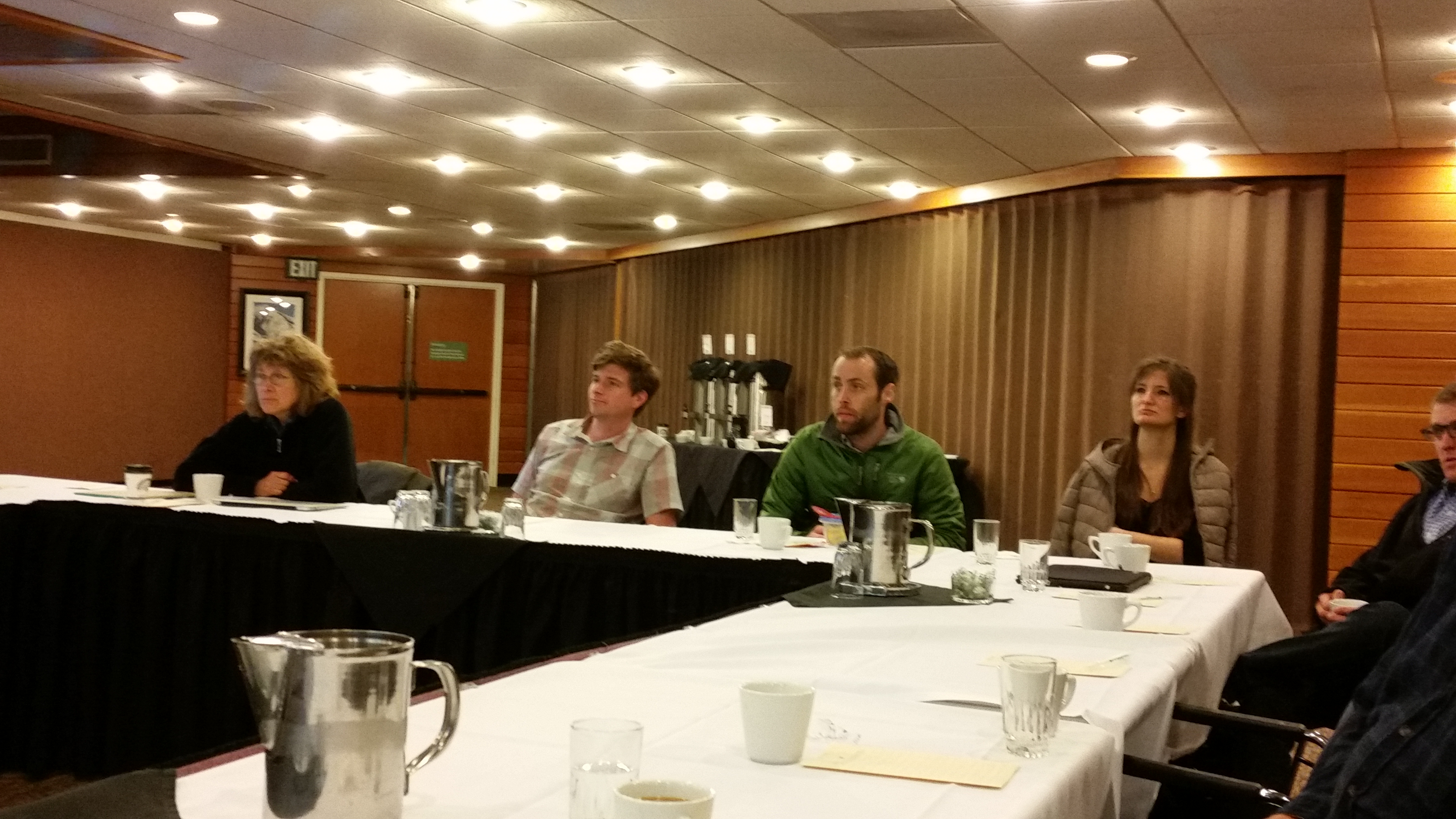
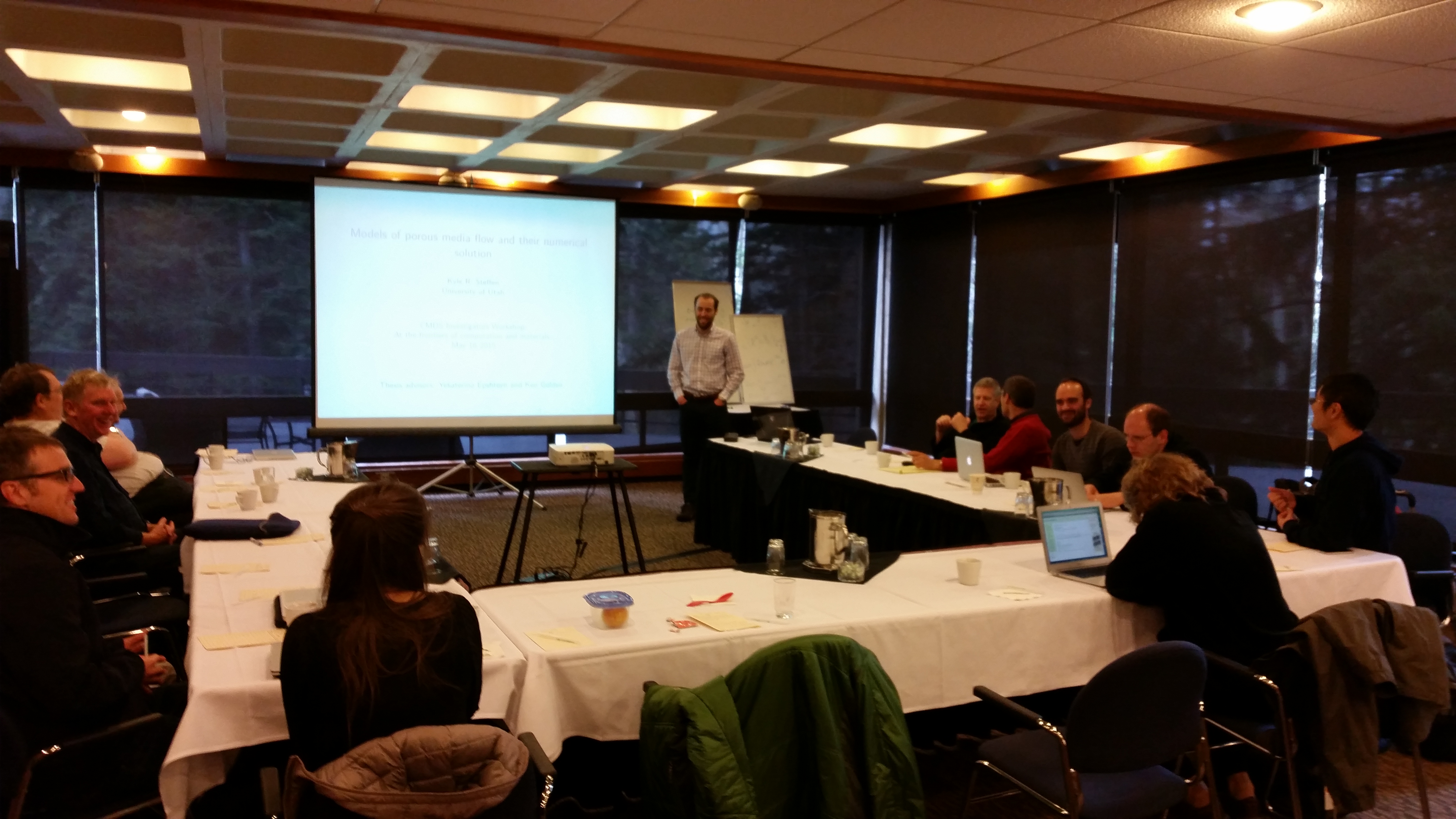
Abstracts
Kirill Cherednichenko: Homogenisation
of the system of high-contrast Maxwell equations
Abstract: I shall discuss the system of
Maxwell equations for a periodic composite
dielectric medium with components whose dielectric
permittivities $\epsilon$ have a high degree of contrast
between each other. I assume that the ratio between the
permittivities of the components with low and high values of
$\epsilon$ are of the order $\eta^2,$ where $\eta>0$ is the
period of the medium. I determine the asymptotic behaviour of
the electromagnetic response of such a medium in the
``homogenisation limit", as $\eta\to 0,$ and derive the limit
system of Maxwell equations in ${\mathbb R}^3.$ The results
that I shall present extend a number of conclusions of the
paper [Zhikov ,V. V., 2004. On the band-gap structure of the
spectrum of some divergent-form elliptic operators with
periodic coefficients, {\it St.\,Petersburg Math.\,J.}] to the
case of the full system of Maxwell equations. This is joint
work with Shane Cooper (Bath).
Patrick Bardsley: Imaging
with correlated sourse pairs.
Abstract: We image scatterers in a
homogeneous medium by sending correlated wave signals from
two different locations and measuring the intensity of the
echoes at a single receiver location. By altering the
positions of the source pairs we form a linear system which
we solve in the least squares sense to recover full waveform
data. We can image with this data using classic techniques
such as Kirchhoff migration which gives known resolution
estimates. The same source pair strategy can be used when we
probe the medium with correlated sources of noise (Gaussian
processes) and measure autocorrelations at a single
location.
Kyle Steffen: Models
of porous media flow and their numerical solution
Abstract: In this presentation I will discuss
ongoing work on two models of
porous media flow and their numerical solution. In the first
half I will
give a brief introduction to fluid flow through sea ice;
discuss a random
network model for effective fluid transport properties in
sea ice from Zhu,
et al. (2006); discuss current work on an extension of the
model to sea ice
with entrained algae; and give some preliminary results. In
the second half
I will introduce the Stokes-Darcy problem, a multiphysics
model coupling
free flow with flow in porous media; discuss the Difference
Potentials
Method, a framework for the development of high-order
numerical methods for
well-posed boundary value problems, including interface
problems; and
discuss progress towards a Difference Potentials Method for
the
Stokes-Darcy problem.
Ornella Mattei: Bounds on the
transient response of two-component viscoelastic
composites
Abstract: In the literature several results
concerning bounds on the antiplane response of two-phase
viscoelastic materials have been proposed for time harmonic
applied fields but very few results regarding bounds in the
time domain for generic applied fields have been derived. In
the latter case, the aim is to provide a bound on the
averaged stress field for each moment of time, given the
time varying averaged strain field, or viceversa. We obtain
such bounds using the analytic method, first proposed by
Milton (1981) and Bergman (1978) independently, which
exploits the analytic properties of the effective
viscoelastic parameters of the composite with respect to the
viscoelastic parameters of the constituents. The resulting
bounds become tighter the more information is incorporated
about the composite geometry, such as the volume fractions
of the constituents and whether it is isotropic or not.
Michal Kordy: Hexahedral
edge element approximation of the electromagnetic field.
Distortion of the elements
We consider the lowest order edge elements on the hexahedral mesh for
approximation of the electric field in the frequency domain. It is known
that if the elements are not parallelepipeds, then the convergence of the
approximation is lost. Falk Gatto and Monk (2009) suggested adding a family
of edge functions to recover the convergence. In the case when the element
distortion is caused by dislocation of the vertices in one direction, we
propose a slightly smaller family of functions that also recover the
convergence. We propose a measure of the element distortion, that allow to
automatically select the elements that are distorted significantly and add
the shape functions only for those elements in the domain. We present
numerical tests, which show that the additional functions indeed allow to
recover the convergence and that the measure of element distortion
successfully allows to select the elements, where the distortion of the
approximation of the field is significant
Based on a joint work with Elena Cherkaev and Phil Wannamaker.
CMDS13
The lucky number
conference was held in
Salt Lake City, Utah, USA in June
2014.
The
conference website.
| Department
of Mathematics, University of Utah, 155 S 1400 E
ROOM 233, SALT LAKE CITY, UT 84112-0090 T:+1 801 581 6851, F:+1 801 581 4148 |






